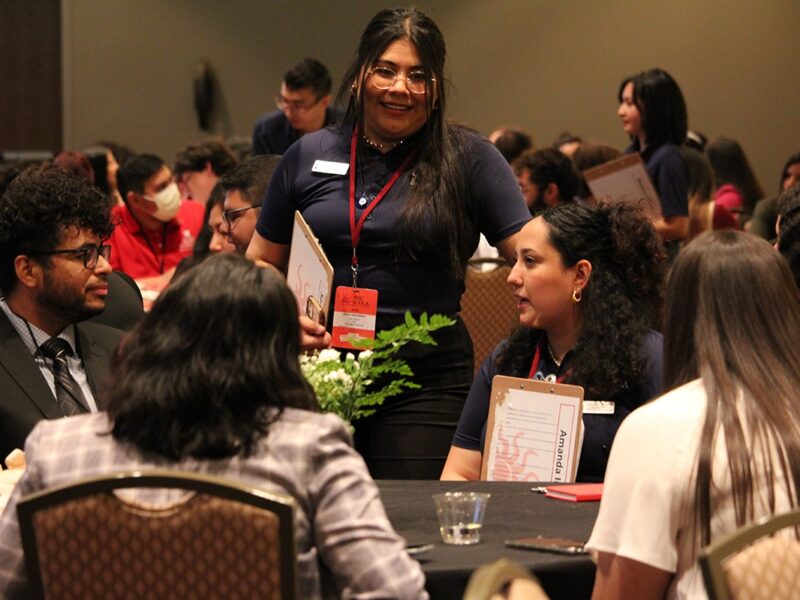Aggies On Every Continent
As one of the few institutions with land-, sea- and space-grant designations, Texas A&M University has a mission of providing teaching, research and service extending well beyond its Texas borders. In fact, there isn’t one continent on planet Earth that Aggies haven’t explored.
Antarctica
Georgina Davis, a Ph.D. student in architecture, traveled to the McMurdo Station in Antarctica to research occupant comfort and energy-efficient buildings in extremely cold climates. While there, she also served as a field assistant for a seal research project.
The melting rate of glaciers was the subject of a research endeavor in Antarctica that brought together Texas A&M Oceanography Professor Alejandro Orsi, Aggie graduate students and colleagues from the University of Gothenburg in Sweden. The team measured water flow from the deck of the Swedish icebreaker Oden and gathered valuable information about the accelerating rate of Antarctic ice melt and its possible consequences over time.
Africa
In many African countries, lack of effective communication between health care professionals and the media can put public health at risk. Bernard Appiah, a research associate at the Texas A&M Health Science Center School of Public Health, grew up in Ghana and experienced the problem firsthand. He formed the Center for Science and Health Communication in Ghana to train health professionals and media institutions there in effective and culturally appropriate communication techniques. Appiah is pictured as a presenter at one of the “Building Bridges” meetings.
The Bush School of Government and Public Service partnered with Conflict and Development for a capstone project that brought five Bush School graduate students to the Democratic Republic of the Congo. The students worked within the local community conducting surveys on youth and nutrition.
Asia
Texas A&M’s branch campus in Doha, Qatar has opened endless possibilities for collaboration with this Arab emirate located in Western Asia. Construction Science Professor John Bryant teaches in the College of Architecture at the College Station campus and serves on the mechanical engineering faculty at Texas A&M-Qatar. Bryant and his team of researchers studied energy consumption in two homes in Qatar, one designed to use little energy for heating and cooling (pictured), and the other built using standard construction techniques; the study is part of a Qatari initiative to form a “greener” future for the nation.
Professor of Sociology Dudley Poston studies Asian societies, specifically gender balance and population issues. Poston and a team of graduate students travelled to Busan, South Korea to present their papers at the International Union for the Scientific Study of Population.
Australia
No matter what field of study, opportunities for Aggies to study abroad are many and varied. Half a world away, the University of Adelaide in southern Australia welcomes Aggies through an exchange program. Junior business marketing major Liz Cook participates in the exchange program and blogs about her fantastic adventures “Down Under.”
Distinguished Professor of Statistics Raymond Carroll’s research takes him to various destinations across the globe, including to the University of Melbourne where he and Australian colleagues conduct statistical analysis of cancer and other health risks as they relate to exposure to certain factors such as diet or radiation. His off-hours sightseeing has taken him to famed Ayer’s Rock in the Northern Territory Outback.
Amy Balzen, a veterinary medicine student, went to study at the Australia Zoo Wildlife Hospital, which was founded by famed wildlife expert Steve Irwin. Balzen says she connected with Australian animal medical professionals through shared passions for bettering the lives of animals and a compassion for all creatures.
Europe
Students in the Master’s Program in International Affairs at the Bush School travelled to Belgium to present their capstone project findings to U.S. Intelligence officers at NATO. The group studied intelligence operations in several European countries, and summarized how those countries gather, manage and report intelligence.
Texas A&M experimental physicists contributed to the design and construction of the Large Hadron Collider near Geneva, Switzerland, a $9 billion, 17-mile long particle accelerator. Scientists at the university continue to play a key role in collecting and analyzing data collected at the LHC.
Professional MBA students from Mays Business School’s Houston-based CityCentre facility travelled to Budapest, Hungary to learn about global business practices. While there, they volunteered with an organization that runs soccer tournaments for the blind. The students helped the program participants practice, using blindfolds to “level the playing field.”
North America
Pediatric dentistry residents at the Texas A&M University Baylor College of Dentistry volunteer each year to be a part of a medical and dental mission in Honduras. Travel costs are funded through donations from pediatric dentistry alumni. This year in only seven days, Drs. Katie Egbert, Steven Hogan and other volunteers saw a total of 1,800 patients.
At the Center for the Study of the First Americans in the Department of Anthropology, researchers conduct groundbreaking studies all over the world. One of the most talked about discoveries came from the research of Michael Waters and colleagues from Colorado, Washington and Denmark who provided evidence that hunters were present in North America 800 years earlier than previously thought. The tip of a spear, shown here in a CT scan, was found embedded in the rib of a mastodon (an extinct elephant-like mammal) at an archeological site in Washington state.
Although Aggies are doing good work around the globe, they never forget about Texas. When this year’s oil spill in the Houston Ship Channel occurred, personnel from numerous Texas A&M entities were dispatched to help including researchers from Texas A&M-Galveston and Texas A&M Veterinary Medicine & Biomedical Sciences who were on site in a hurry to determine how the spill would impact marine life.
South America
Texas A&M astronomer Darren DePoy and his team are part of the Giant Magellan Telescope project to be constructed in Chile by 2019. When completed, the $700 million telescope will have 10 times the resolution of the Hubble Space Telescope. Depoy’s team was selected to build a spectrograph, known as GMACS, which will allow unprecedented observation of the most distant objects in the known universe.
Texas A&M University and the Universidad Nacional Agraria-La Molina (UNALM) in Lima, Peru, conducted a three-year cooperative agreement to strengthen the research and teaching capacities of UNALM faculty in support of the U.S.-Peru Trade Promotion Agreement. Here Dr. Gary Briers inspects oranges at the UNALM Agricultural Experiment Station and Research Farm.
As Aggies continue to explore every corner of the globe, it seems only outer space is left to conquer.
Just kidding, we’re there too!
Dr. Steven Swanson currently resides on the International Space Station. He received his Ph.D. in Computer Science from the Department of Computer Science and Engineering in 1998. He was honored by the department with the Distinguished Former Student Award in 2010 and is currently a member of the department’s advisory board.
Gig ’em, Steve!
Media contact: Lesley Henton, Texas A&M Division of Marketing & Communications.





